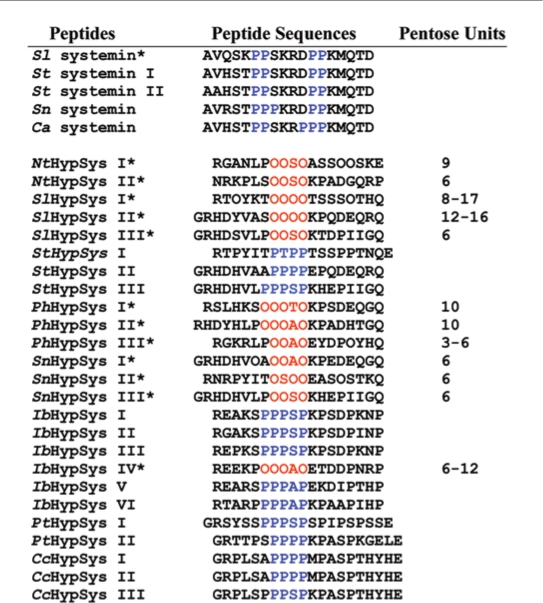Table 1.
Comparisons of the amino acid sequences of isolated and putative Systemin and HypSys peptides
 |
Tomato systemin was aligned with the putative homologs from potato (St systemin I and II, Solanum tuberosum), nightshade (Sn systemin, Solanum nigrum), and pepper systemin (Ca systemin, Capsicum annuum). HypSys peptide from tobacco (NtHypSys I and II), tomato (SlHypSys I, II and III), petunia (PhHypSys I, II and III, Petunia hybrida), nightshade (SnHypSys I, II and III), and sweet potato (IbHypSys IV, Ipomoea batatas), and the putative peptides encoded in the precursor protein deduced from the cDNA of sweet potato (IbHypSys I, II, III, V, and VI) were aligned by the hydroxyproline/proline central motif. The poplar (PtHypSys I and II, Populus trichocarpa) sequences were deduced from Map Viewer Gnomon model: hmm3236034, and the coffee (CcHypSys I, II and III, Coffea canephora) sequences were deduced from Unigene SGN-U311058 in the Sol Genomics Network (http://sgn.cornell.edu). The hydroxyproline-rich regions of the isolated peptides are red and the proline-rich regions of the systemins and the putative HypSys peptides are blue. The isolated peptides are marked with a star.
